Stopping the Nazi V-1 Buzz Bomb
September 26th, 2023
8 minute read
The current war in Ukraine has seen Russian forces use a combination of cruise missiles and Iranian-made Shahed drones to strike civilian targets in Ukrainian cities. At this point, the Russians have launched more than 1,000 missiles, with some waves targeting Ukraine’s power grid, along with many indiscriminate attacks against homes, hospitals, schools and shopping centers. According to U.S. sources, approximately 3,000 civilians have been killed, and more than 6,000 injured, in the Russian missile and drone attacks.
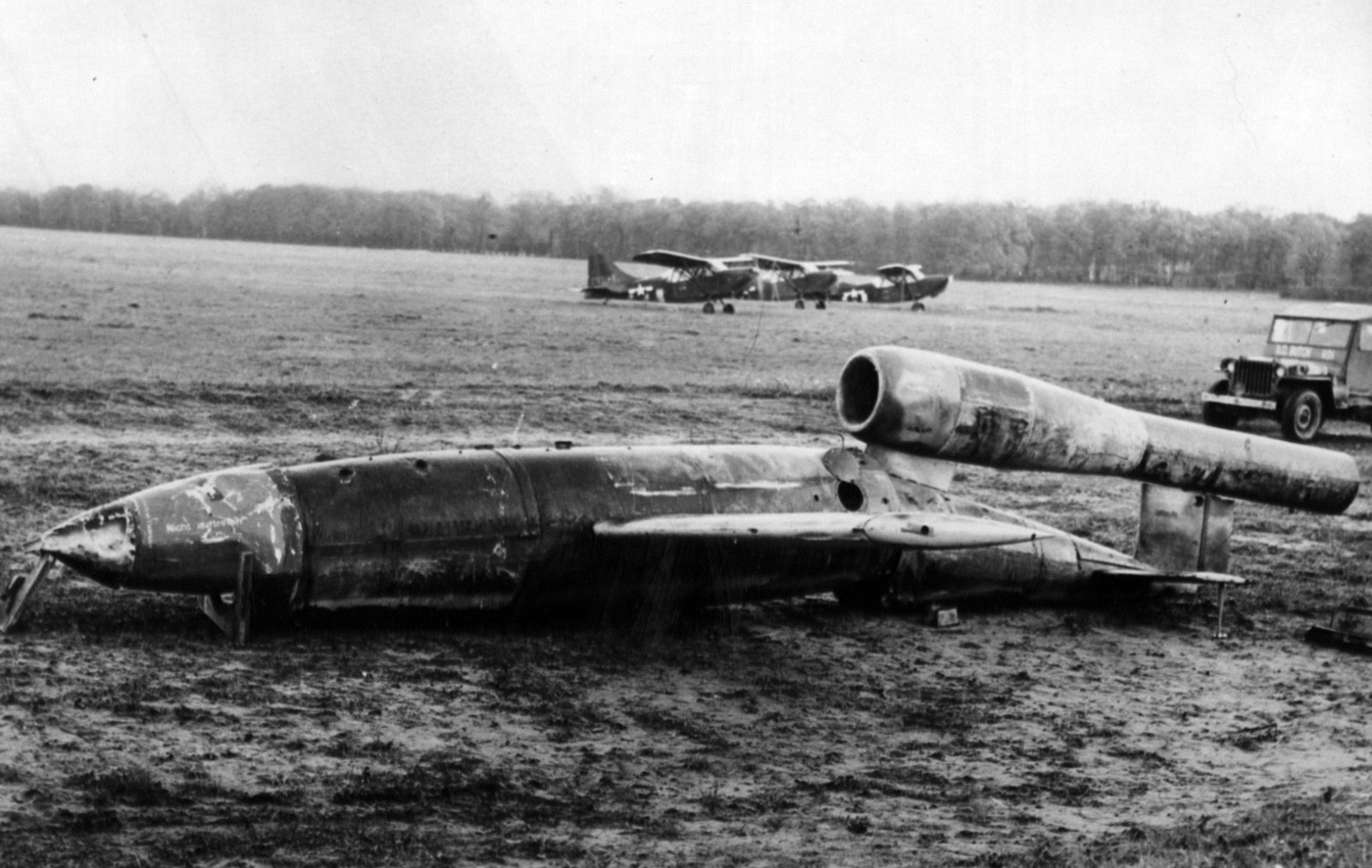
Ukrainian air defenses have been active, and often effective throughout the war. Anti-missile systems have downed many Russian cruise missiles, and multiple layers of AA defense have destroyed a high percentage of Shahed drones before they could reach their targets. In May 2023, Ukraine claims to have shot down a “hypersonic” Kinzhal missile using a U.S.-supplied Patriot AA system. Even so, Russian missile and drone attacks continue.
The First Cruise Missile
These attacks pushed me to investigate the first use of cruise missiles, and the initial defenses used against them. On June 12, 1944, the first V-1 flying bombs were launched from bases near Pas-de-Calais in France, targeting London. On the night of June 15th, a massive wave of V-1s was launched and 73 hit London, while 53 came down in Southampton and Portsmouth. Each flying bomb delivered a 1,870-lb. high explosive payload. Hitler’s “Vengeance Weapons” made their deadly debut, and England scrambled to find a defense against the robot bomb onslaught.
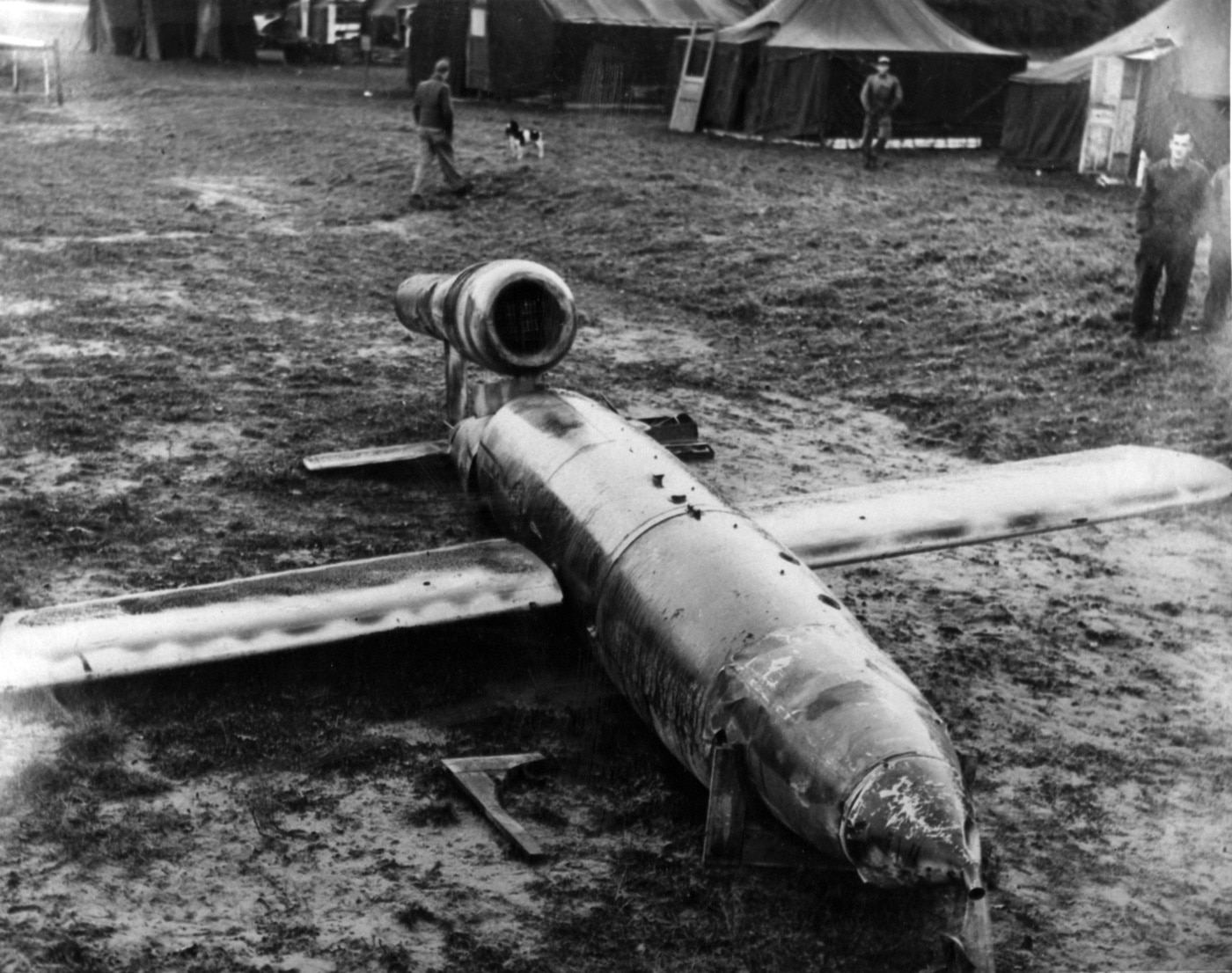
The V-1 flying bomb (officially designated “Fi 103”) was a relatively simple device that leveraged some cruelly innovative thinking. As conventional German bombers were no longer capable of penetrating British air defenses by day, and Luftwaffe night raiders were only marginally more effective, the V-1 provided a relatively inexpensive way to strike targets in England. No pilots were needed for the weapon itself, and as of June 1944, the speed of the V-1 made it particularly difficult for the RAF to intercept.
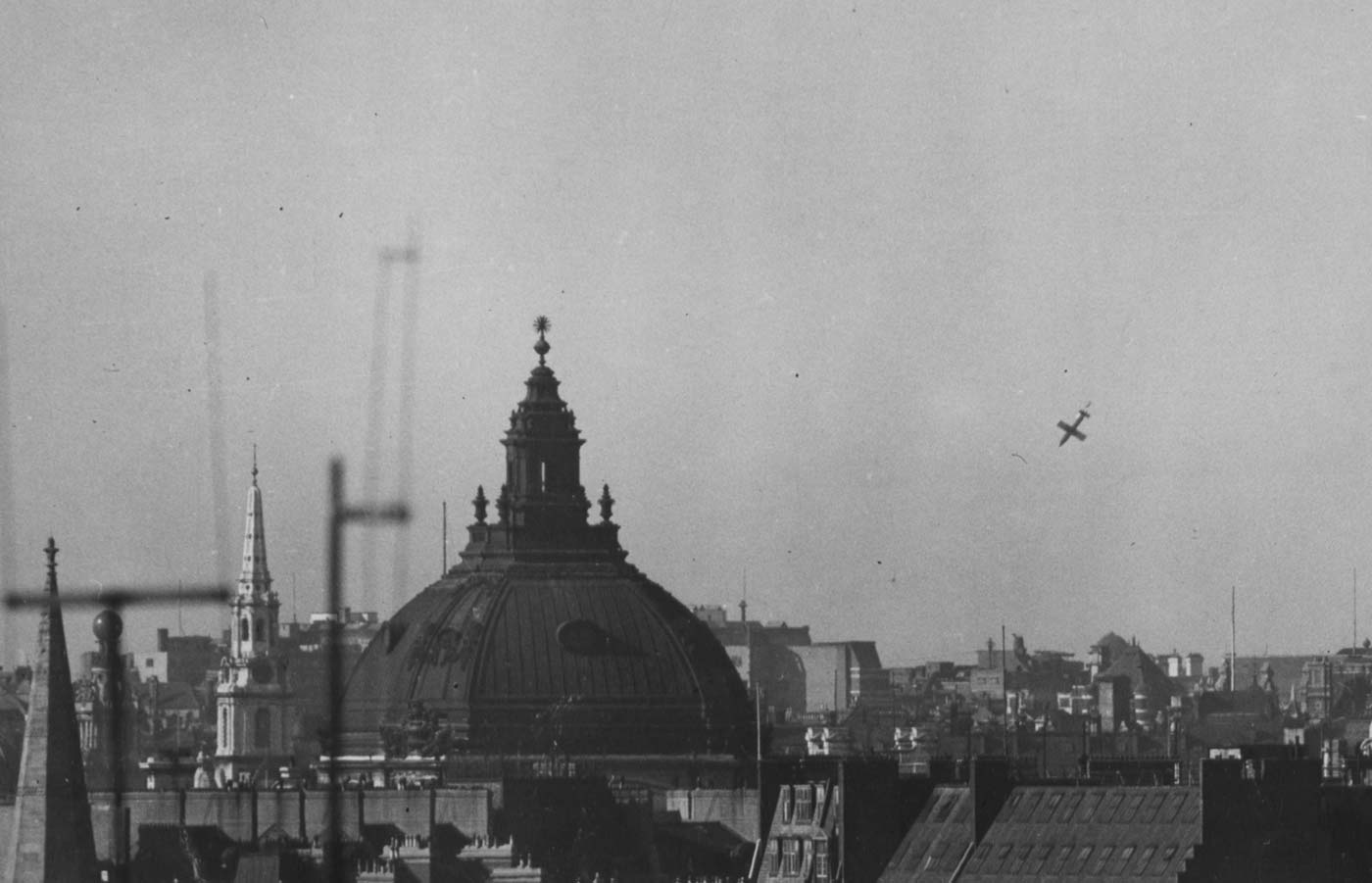
The downside of the V-1 was that it was inaccurate, and incapable of truly damaging the British ability to make war. It was named a “Vengeance” weapon for a reason — and that is exactly what it was. The unmanned, unthinking, and unfeeling nature of the flying bomb was at once its greatest strength, and ultimately its greatest weakness. The initial shock related to the V-1 was quickly replaced by a grim determination to stop it.
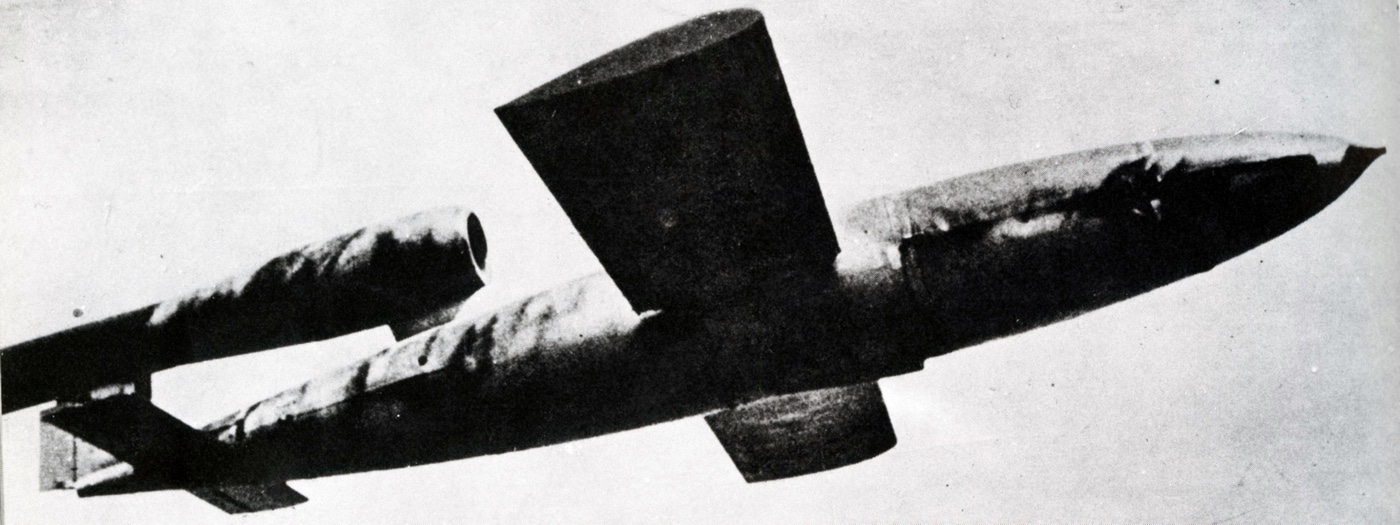
The V-1 fuselage was made of welded sheet steel while the wings were made of plywood. It was guided by a rudimentary autopilot that used a gyrocompass (a few used a simple radio transmitter). At its most accurate, the V-1 fell within a 7-mile diameter circle around the target area.
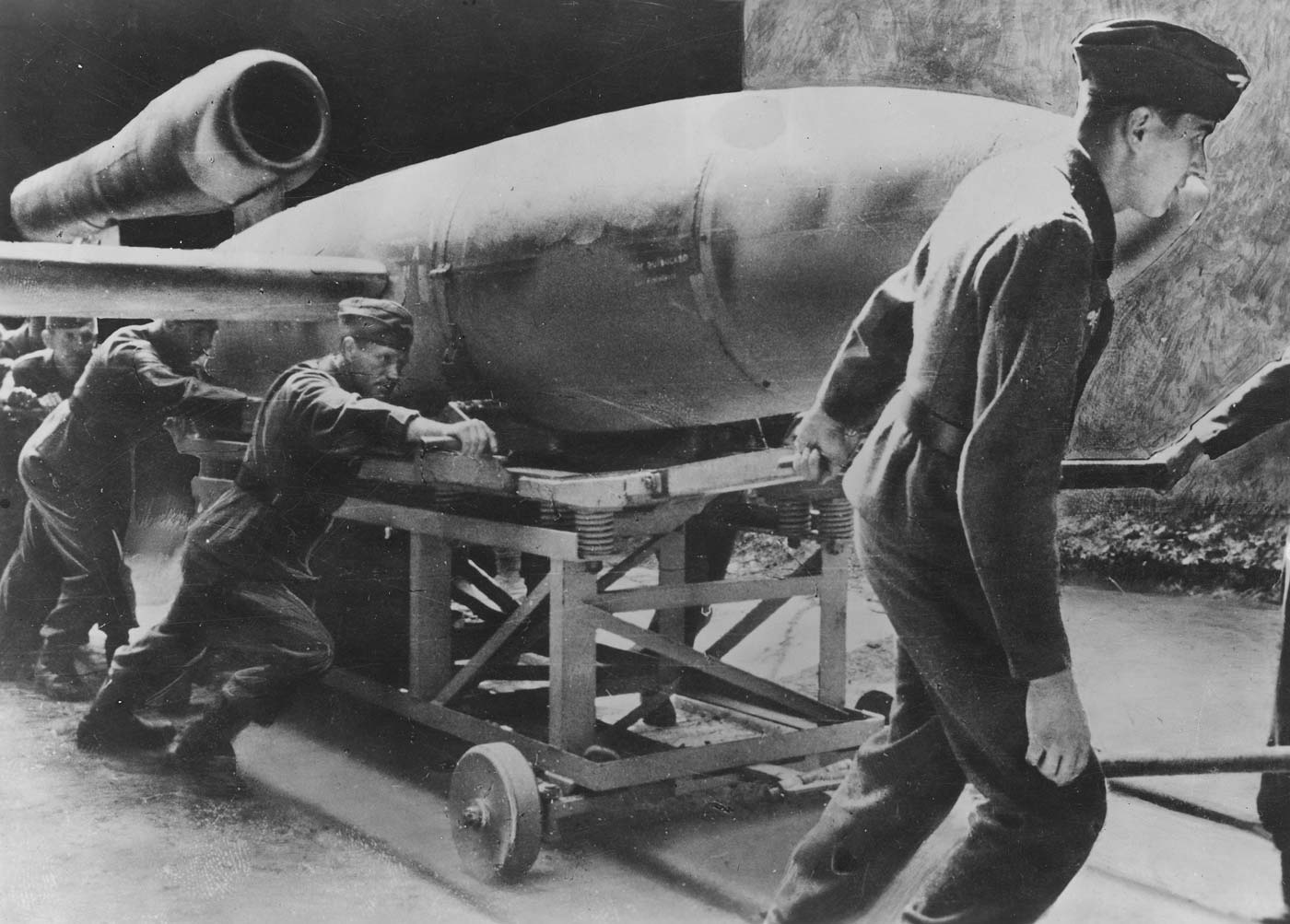
Propelled by an Argus pulsejet engine, the buzz bomb moved quickly at an average speed of 350 mph. The flying bomb purposefully flew at a low altitude (between 3,000 to 4,000 feet) — high enough to stay above light automatic AA guns, and low enough to move faster than almost any Allied interceptor below 10,000 feet. The small size of the V-1 made it hard to spot, and most British or American fighters would have to dive steeply in order to catch it.
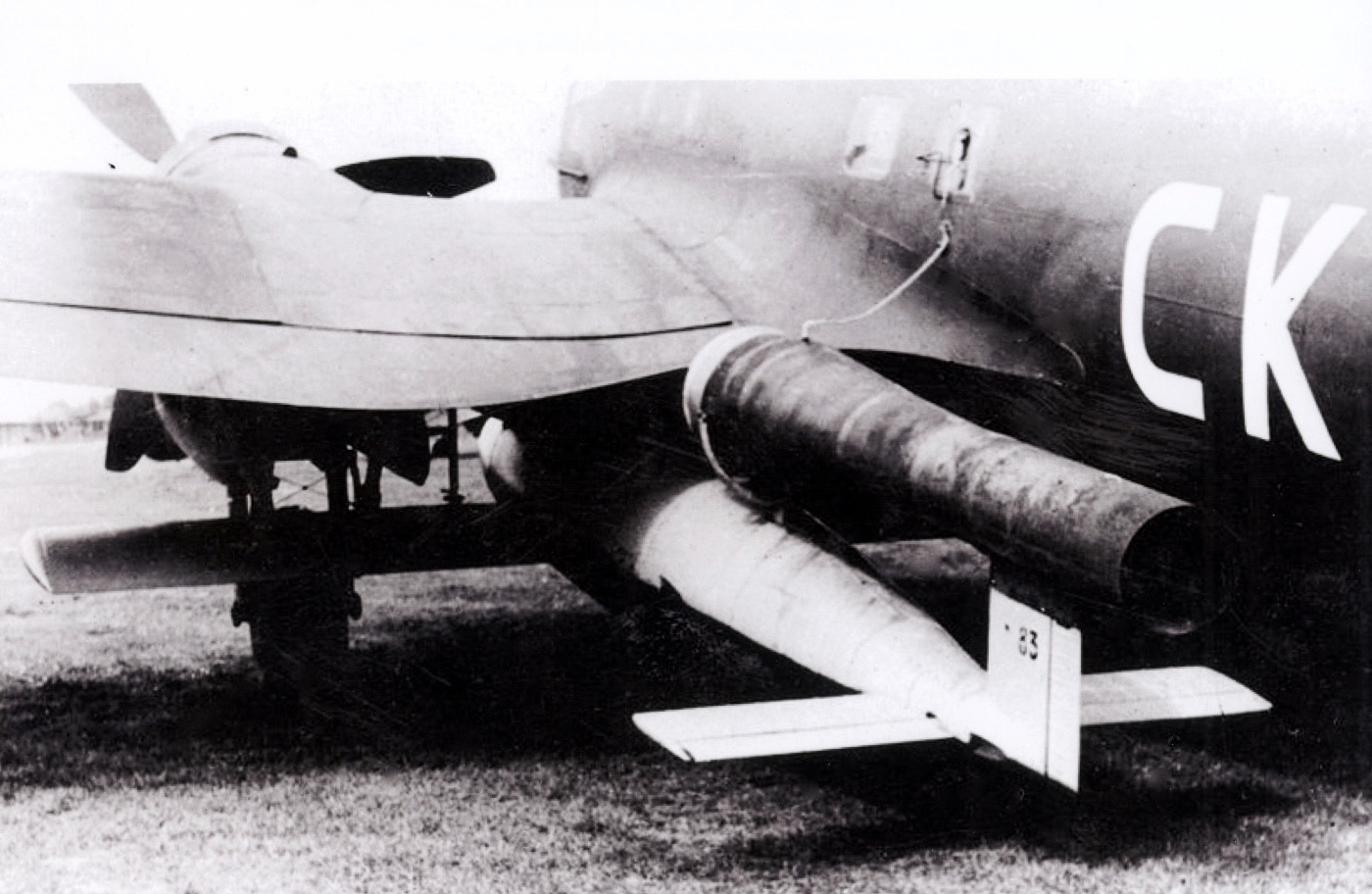
British AA gunners soon found that the V-1 was particularly hard to hit — as their traversing speed could not keep up. This was a significant challenge for the standard British QF 3.7-inch AA gun, an otherwise highly successful weapon. For those on the ground, the telltale throb of V-1’s pulsejet was unmistakable, but when the engine went silent the real fear set in — the bomb was falling.
The V-1’s destructive power came from its 1,870-lb. Amatol warhead, which produced a tremendous blast effect. When the flying bomb hit an urban area, the explosion was enough to shatter an entire neighborhood. To make certain of its detonation, the Germans equipped the V-1 with three fuses:
- An electrical fuse triggered by nose or fuselage impact
- A short time delay to allow deeper ground penetration
- A longer time delay designed to go off two hours after launch
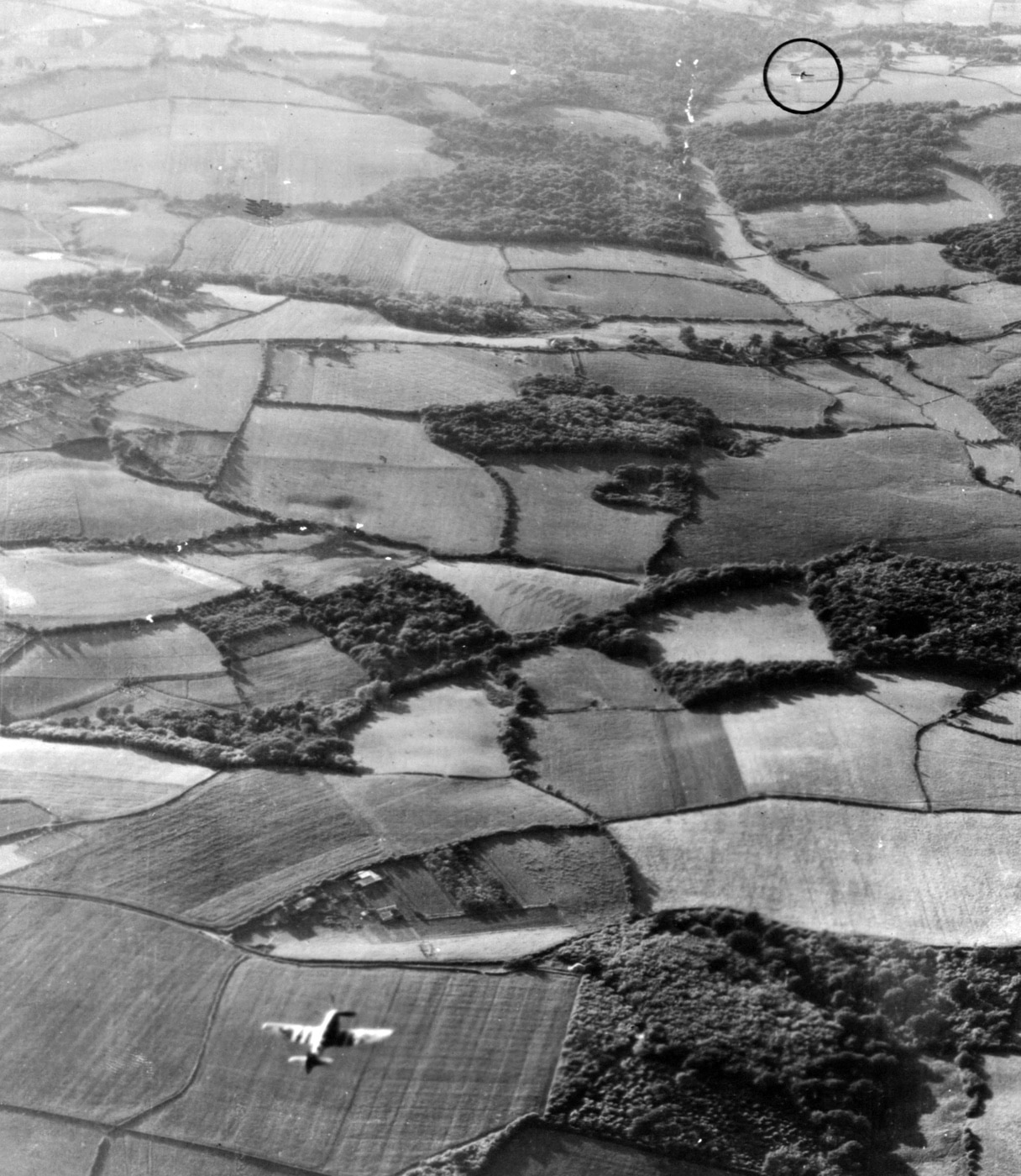
The V-1 was a ticking time bomb from the moment it was launched. Ultimately, the three-fuse system was very effective and few unexploded V-1s were ever found. Most of the flying bombs’ secrets were uncovered when Allied forces captured their launch facilities and recovered bombs intact.
British Defenses
The QF 3.7-inch AA gun (94mm) was Britain’s primary anti-aircraft gun, similar in many respects to the German 88mm flak and the US 90mm AA gun. Introduced in 1937, the 3.7-inch gun performed admirably throughout the war, particularly in the Battle of Britain. It was a massive artillery piece, weighing nearly 21,000 pounds, and supported by a crew of seven. The QF 3.7-inch gun fired a 28-pound shell and featured a rate of fire of up to 20 rounds per minute. Maximum altitude for AA fire was 45,000 feet.
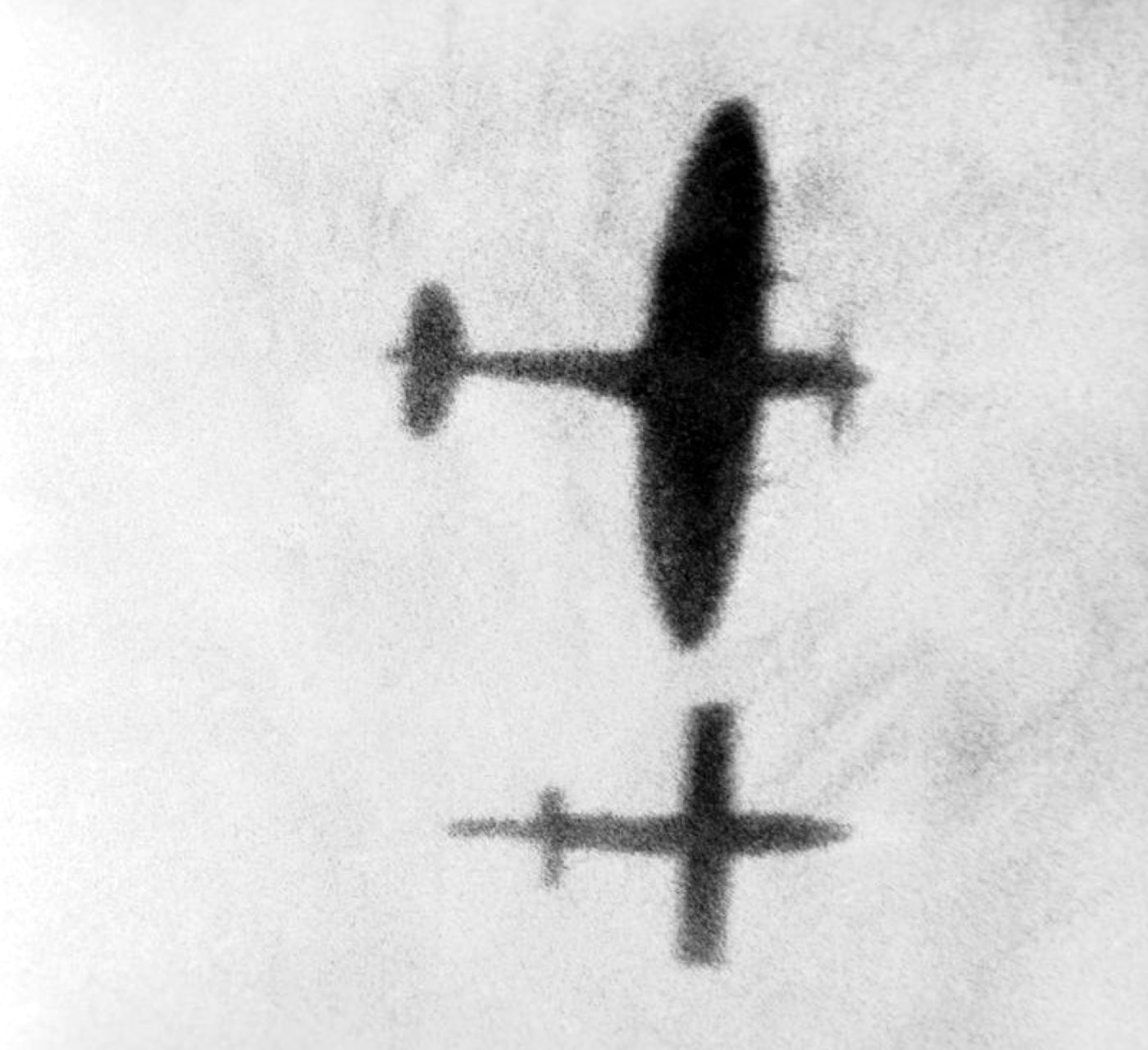
When the first V-1s appeared over England, the 3.7-inch guns struggled to hit the fast-moving, low-flying buzz bombs. However, later in 1944, the U.S.-designed proximity fuse (“VT Fuse”), coupled with a Bell Labs fire-control system (using an analog computer) turned the QF 3.7-inch into a buzz bomb killer. By early 1945, British AA units were knocking down more than 90% of the V-1s they fired upon.
Allied interceptors: When the V-1 onslaught began, the RAF quickly concluded that the aircraft most capable of intercepting the buzz bomb was the Hawker Tempest. Unfortunately, there were only a small number (less than 30) of the speedy Tempests in service. Intercepting the V-1 proved to be a tricky business as the target was small and fast, and if detonated in the air the blast was enough to knock down an interceptor close behind.
Tempests became the most prolific of the V-1 interceptors with 638 kills. The de Havilland Mosquito was next with 623 V-1 kills, followed by the Supermarine Spitfire XIV with 303, and the U.S. North American Mustang with 232. The British pushed their jet-powered Gloster Meteor into service as a V-1 interceptor, but teething problems with the new jet limited it to only 13 buzz bomb kills.
Barrage balloons: The British deployed a defense line of barrage balloons around London, aiming to snag V-1s in the mass of cables dangling beneath. Some V-1s were fitted with cable cutters on the leading edges of their wings, but even so the barrage balloons were able to stop nearly 300 flying bombs.
America’s Battle Against Buzz Bombs
While the British anti-aircraft guns and interceptors defended London against the V-1 blitz, American AA units in Western Europe fought their own battle against the buzz bombs. Stationed around the critical port of Antwerp, Belgium, the US 90mm anti-aircraft guns made their own mark in the war against the robot bombs.
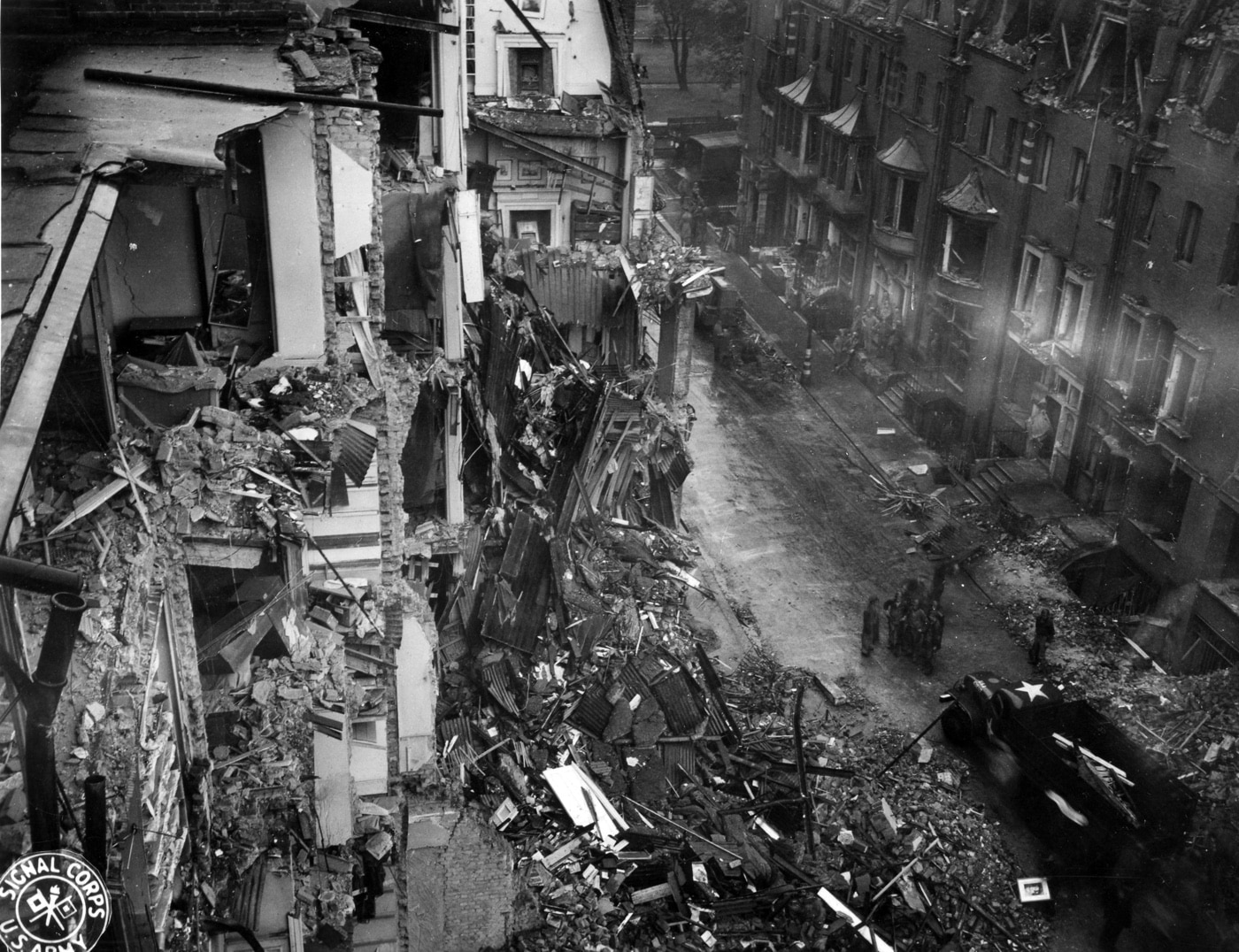
The U.S. 90mm M1A1 AA gun: America’s heavy anti-aircraft gun is one of the least celebrated of the great AA weapons of WWII, but the M1A1, first built in 1940, was certainly one of the most effective. The 90mm guns were normally radar-directed, and by 1944 the guns leveraged an advanced SCR-584 microwave radar coupled with a Bell Labs M3 gun data computer and M9 gun director.
In the defense of the Normandy beaches, and then the “gun line” protecting Antwerp, the M1A1 crews (1 gunner and 7 loaders) fired their 23-lb. HE shells at up to 20 rounds per minute — all with amazing accuracy for the era. In the final equation, the human gunners of the Allied AA units proved more than a match for Hitler’s robot flying bombs.
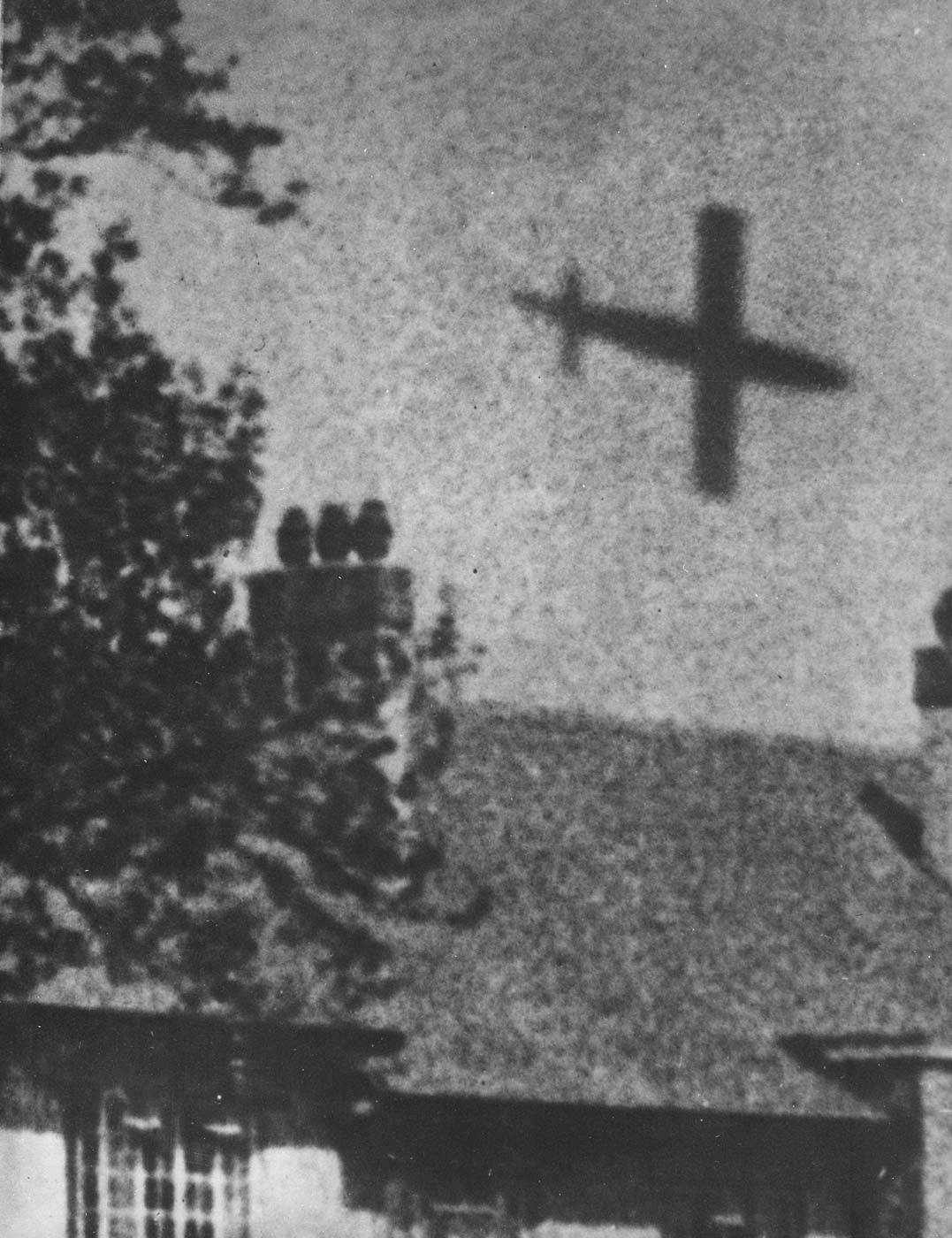
The following entries from the official war report of the US 407th AAA Gun Battalion tell the story of their battle with the buzz bombs.
Late October 1944, near Antwerp:
Since its liberation on 3 September by British forces, the port’s populace had labored day and night to prepare the 40 miles of docks for use by Allied shipping. Men and women strolled carefree along the streets and there was a general belief that the war would be over by Christmas. However, on 13 October the first V-1 struck Antwerp. Without delay, two brigades of American anti-aircraft artillery were rushed to the scene.
The battalion was attached to the 21st Army Group and our primary mission was to man an assigned sector in a gun belt with the purpose of engaging, under certain conditions, robot bombs (V-1, “divers”) fired over the sector.
On 1 November 1944, the battalion was authorized to engage “diver” targets without waiting for the completion of GOR lines from Group Headquarters. Although we did not know it at the time, the defense of Antwerp against V weapons was to be our most important mission of the war.
Little did we realize that the next six months’ activities, completely free of personal contact with enemy forces, would provide most of us with the most nerve-wracking, heart-tingling experiences of our Army lives. For we were to witness the heartless German buzz bomb assault on Belgium’s leading industrial city. Thousands of civilians were to be killed as an average of twenty-six V-1s and ten V-2s hurtled down daily on the crowded streets.
The destruction of V-1s was divided into two distinct categories, “A”, when blown up in the air, and “B”, when crippled and forced to the ground before reaching the city of Antwerp.
For example: From 28-30 November, Battery A claimed 1 Category A and 6 Category B kills. Battery B claimed 3 A and 4 B. Battery C claimed 4 Category A and 3 Category B, while Battery D claimed 1 Category A and 5 Category B.
On 18 January, “A” Battery broke a firing record when its expert gunners registered a kill on a “diver” expending only two rounds of HE ammunition.
From 1 November 1944 to 19 April 1945, the 407th engaged 787 pilotless aircraft, destroying 134 in the air, and brought down 262 others. Along the US AA gun line during that time, 2183 V-1s were blasted from the sky — only 211 got through.
Conclusion
The V-1 represented a desperate bid by the flailing Third Reich. And while it may not have held the potential to turn the war in their favor, it did exact a painful toll upon those in its sights. Thanks to the efforts of the brave Allied defenders, its effect was minimized as much as possible, and the inevitable end of the German threat would soon bring peace to Europe.
Editor’s Note: Please be sure to check out The Armory Life Forum, where you can comment about our daily articles, as well as just talk guns and gear. Click the “Go To Forum Thread” link below to jump in and discuss this article and much more!
Join the Discussion
Continue Reading
Did you enjoy this article?

 280
280






